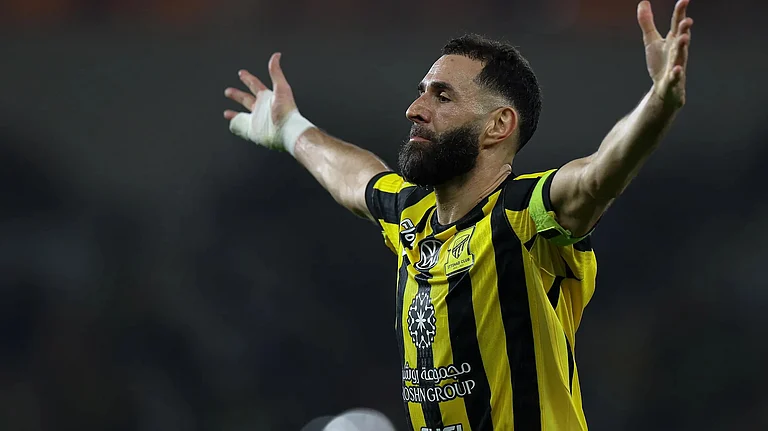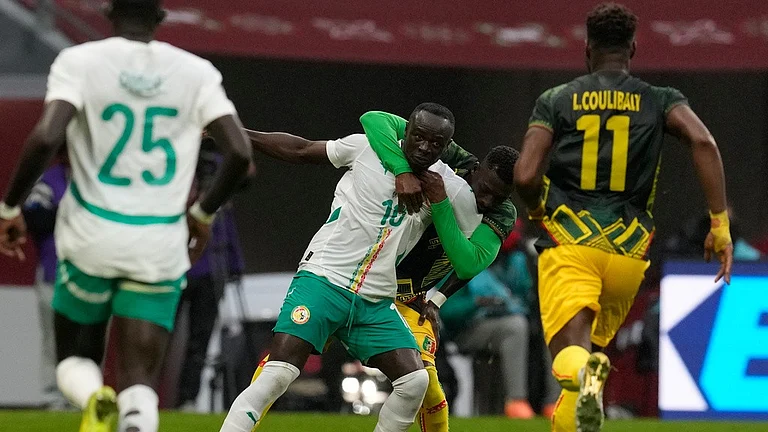A few days after the Citizenship Amendment Bill became law—just a little short of two years ago—India’s north-eastern states erupted in protest. Among the thousands of young people who poured into the streets, braving arrests and police brutality, was young Shillong rapper Mejied Kyrpang Thangkhiew. In a video that quickly went viral, Thangkhiew prowls atop a white van, surrounded on all sides by protesters waving their phone lights in the air. A reggae beat blares from an unseen speaker as the rapper performs verses from his Rastafarian protest anthem Rise to a chorus of cheers from the adoring crowd. The insurrectionist spirit at the heart of hip-hop culture, which has made rap a weapon of choice for young radicals from Baltimore’s inner-city projects to the Maidans of the Middle East, was now making its presence felt on Indian streets.
As the protests spread, similar scenes played out all across the country. At a Delhi University protest early in January 2020, a young activist rapped messages of defiance and solidarity over a rudimentary dhol beat. A rotating cast of rappers—ranging from the relatively established (Sumit Roy, Prabh Deep), to underground (Naveen Koomar, Armaan Yadav)—popped up at the Shaheen Bagh protest. In Bangalore, hip-hop collective Wanandaf organised a protest cypher, while Chennai rap star Arivu performed at protests across Tamil Nadu. Even Raftaar interrupted a concert to express his solidarity with the protesters.
Sociologist Ojas Shetty counted at least 40 hip-hop tracks referencing the CAA/NRC protests that were released in the three months following the Act’s passage, by artistes, including Sumit Roy, Arivu, Swadesi, Cizzy and many others. That number balloons to over 100 if you include other songs critical of the government and right-wing politics. For years, Indian hip-hop had been called “revolutionary” and “political” by lazy culture writers despite scant actual political engagement beyond generic symbolic gestures (barring a few notable exceptions). But now, the movement had emerged from its shell and onto the streets, ready to take up that mantle.
Fittingly, this happened just as Indian hip-hop turned 18. The genesis of desi hip-hop traces back to 2002, when Pakistani-Canadian rapper Bohemia released Vich Pardesan De, an autobiographical account of life as a young desi on the American streets that is widely believed to be the first Punjabi rap album. It’s success not only made Bohemia a star, but also kickstarted a movement back in the subcontinent whose coming-of-age story is deeply intertwined with the socio-economic upheavals of post-liberalisation India.
It’s a long tale, so here’s the Cliff Notes version. Bohemia’s success, as well as the popularity of the Asian Underground in the UK, inspired a generation of kids from Punjab—on both sides of the border—to take up the mic and fuse hip-hop with bhangra, folk and Punjabi pop. By 2011, rappers dominated the Punjabi music industry, with Yo Yo Honey Singh reportedly selling a million copies of his independently released debut album International Villager. He broke into Bollywood soon after, opening the door for Punjabi rap peers like Badshah, Raftaar and Diljit Dosanjh. While these artistes weren’t necessarily very committed to the idealism of underground hip-hop—they drew more from commercial party rap and Punjabi pop—they did establish that rap music could succeed in India.
While this process was playing out, hip-hop was laying down deep roots all over the country, helped along by globalisation and technology. In the early 2000s, MTV and Channel V brought artists like Eminem, 50 Cent and Sean Paul into our living rooms. For a little while, it seemed like hip-hop nights had taken over all the clubs in the country. But the real revolution was happening far away from the glitzy club scene, in the middle-class enclaves and working-class tenements of cities like Mumbai, Delhi, Calcutta and North Chennai. The proliferation of relatively cheap computing devices and internet connections turned hundreds of kids onto hip-hop music, dance and fashion. These kids went online and found others like them, forming communities that shared knowledge, met in community halls and parks, and taught themselves how to rap, break and DJ.
It’s no coincidence that early hip-hop success stories came from regions (Punjab, Karnataka, Tamil Nadu) that had cultural infrastructure relatively independent of Bollywood, or that Indian hip-hop’s most effective incubators have been the urban communities most ignored or stereotyped by mainstream Indian culture. It appealed to a generation of kids raised on the post-liberalisation gospel of prosperity, youth and individualism who found that—for reasons of identity or class—they were not represented in the Indian neoliberal dream. It had the added advantage that unlike rock or electronica, rap didn’t require expensive gear, studios and backing musicians. The barrier to entry was low.
But hip-hop’s strongest asset was the history of rebellion and truth-telling that is inscribed in its very roots. The subculture’s links to working-class Black identity and militant anti-race politics, as well as its centering of marginalised identity and gritty reality, made it compellingly attractive to these kids trying to forge new, aspirational cultural identities. And like rappers across the world, they didn’t just adopt hip-hop, they made it their own.
ALSO READ: Songs Of Freedom & Redemption
It took a few years for that process of indigenisation to really get going, but by 2015-16, artistes like Naezy, Divine and producer Sez On The Beat were pioneering a new sound that went mainstream largely on the back of an organic fandom built thanks to cheap data and smartphones, which allowed them to bypass the elite gate-keepers of mainstream culture and reach out directly to the under-represented masses. In 2019, Indian hip-hop celebrated its 17th birthday with a high-society debutante ball, Zoya Akhtar’s Gully Boy. A year later, now old enough to vote, it found its political voice. As it turns 20 at the end of 2021—finding its feet again after the lost year of the pandemic—what’s next?
Over the last few years, Indian hip-hop has gone global, with artists getting signed onto international labels and collaborating with American rap icons like Nas and Royce da 5’9”. Indian artistes have forged links with diaspora rappers and producers, and Indian labels like Azadi Records, Gully Gang Entertainment and BGBNG have caught the attention of international investors and music entrepreneurs. More importantly, hip-hop has survived Bollywood’s death-hug, protecting its creative and commercial independence from tinsel-town’s all-devouring grasp. Not since Indipop has a musical scene or movement in India built such a strong independent presence, and even Indipop wasn’t as diverse and deeply rooted across the country as hip-hop has become. Which direction the desi hip-hop story takes now depends on how well it balances the pull of a notoriously risk-averse and commercially-focused music industry with the push of its rebellious ethos and utopian ideals, especially in these politically and socially divided times.
ALSO READ: Wu-Tang Manual For Indie Homies
I’m no soothsayer, but I think the signs are encouraging. Last November, I gingerly left my home after months of lockdown to watch Mumbai rap group Swadesi perform alongside Ambedkarite cultural activist Sheetal Sathe, the former president of Kabir Kala Manch. At a posh venue in South Mumbai, I watched as a bunch of young tracksuit-clad rap fans jumped and danced to the sounds of anti-caste Marathi folk, their fists raised in solidarity and defiance. I left the club that night re-energised, faith in the emancipatory potential of Indian hip-hop renewed once again. When it comes to Indian hip-hop at least, the kids are alright.
(This appeared in the print edition as "The Kids Are Alright")
(Views expressed are personal)
ALSO READ
Bhanuj Kappal is a culture writer working on a book on Indian hip-hop





















